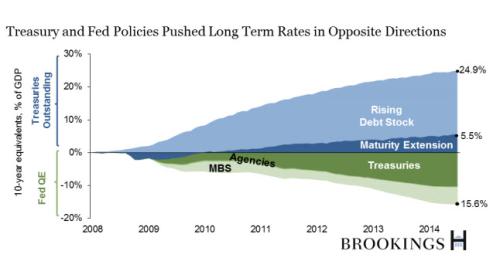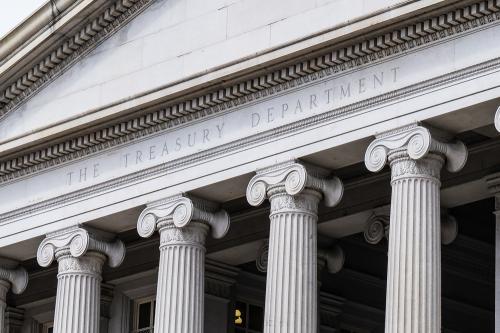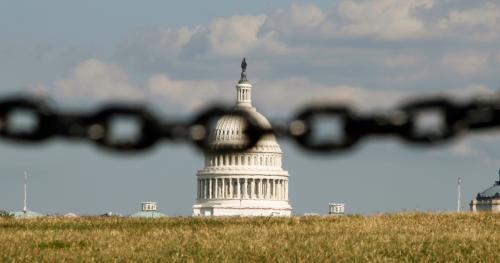When it comes to the debt ceiling, time really is a flat circle.
The debt ceiling was created in 1917 so that the U.S. Treasury didn’t have to get congressional OK every time it borrowed money to finance World War I. Today, it refers to the legal limit on the borrowing the Treasury can do in order to meet obligations the government has to citizens, vendors, investors, and other creditors.
In the past, raising the debt ceiling was controversial, but a a routine matter of congressional business. More recently, however, the all-too-frequent approach of the “fiscal cliff” has become a repetitive political showdown. Some would even say the string of “fiscal fights” during the Obama administration, when lawmakers repeatedly ran up against this ceiling before negotiating to suspend or raise the ceiling at the last minute, made it a bit of a like a Washington version of the movie Groundhog Day
The continual debate in Congress has given late night hosts plenty of material, but there hasn’t been a resolution to these fights—or a compromise on what to do about the rising federal debt, which has many economists worried. That’s why we get back here year after year.
Here, David Wessel, director of the Hutchins Center on Fiscal and Monetary Policy at Brookings, takes us on a walk down memory lane, starting in 1954:
First president to run into big trouble getting Congress to boost debt ceiling was Eisenhower in 1954. Details here: http://t.co/IvJYZUPF2k
— David Wessel (@davidmwessel) March 13, 2015
And 1965 …
Before we dive back into debt ceiling debate, here's a wonderful 1965 clip of Sen. Everett Dirksen on the subject. https://t.co/QPh3ppDmMn
— David Wessel (@davidmwessel) August 1, 2017
And here’s a chart of debt ceiling increases from 1996-2013 …
Sad (and complicated) story of the debt ceiling in one @WSJ chart https://t.co/AhinqX0qhu via @WSJ pic.twitter.com/N6X8jA57Sa
— David Wessel (@davidmwessel) August 28, 2017
And remember when Jay Leno was on TV? The political circus over the fiscal cliff was happening then, too. Here’s the late night comedian in 2012:
Even the popular television show the West Wing took on the debt ceiling … in 2005:
In 2011, Jon Stewart made light of the debt ceiling fearmongering that happens every time the U.S. approaches the fiscal cliff:
Six years later, we’re here again. The Treasury secretary has warned Congress that it has to deal with this in September, and no one in Congress is looking forward to that.
But if the debt ceiling isn’t raised, is it really fiscal Armageddon? It likely would do severe damage to the credibility of the U.S. government, one of the world’s heaviest borrowers. Already, the Treasury has to pay slightly higher interest rates to borrow because financial markets are worrying that this time Congress won’t act at the last month.
This handy explainer from the Hutchins Center explains what would the U.S. Treasury would do if it didn’t have enough cash to pay all the bills coming due:
Unable to pay all its bills and meet all its obligations, the Treasury would have to choose which ones to pay. Failure to pay Social Security or other benefits on time would have obvious political ramifications. A failure to make interest or principal payments on time – a default – is likely to damage the way the markets view U.S. government debt, perhaps increasing the interest rates that investors demand when they buy Treasury bonds. But Congress has never failed to act in time, so no one knows with certainty what the consequences would be.
For more on the debt ceiling, read the full explainer.
The Brookings Institution is committed to quality, independence, and impact.
We are supported by a diverse array of funders. In line with our values and policies, each Brookings publication represents the sole views of its author(s).





Commentary
It’s fall, and that means the political circus over the debt ceiling is back
August 29, 2017